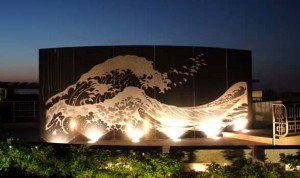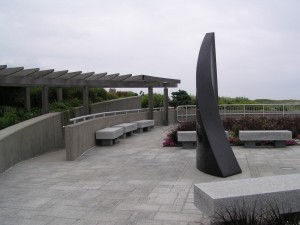 The recent news that some of the wreckage of Air France 447 (lost on a flight from Rio to Paris) was located in the Atlantic Ocean has turned my thoughts to the 1996 crash of TWA 800 – a Boeing 747 lost with 230 souls on board on July 17, 1996. The aircraft was on a scheduled flight from New York Kennedy airport to Paris when it exploded in mid-air a few minutes after departure.
The recent news that some of the wreckage of Air France 447 (lost on a flight from Rio to Paris) was located in the Atlantic Ocean has turned my thoughts to the 1996 crash of TWA 800 – a Boeing 747 lost with 230 souls on board on July 17, 1996. The aircraft was on a scheduled flight from New York Kennedy airport to Paris when it exploded in mid-air a few minutes after departure.
This is perhaps the most thoroughly investigated commercial air crash in history. 95% of the aircraft was eventually recovered from the Atlantic waters, 14 miles east of Long Island. While numerous theories of what caused the accident abound on the Internet – terrorism, a U.S. Navy surface-to air-missile strike, explosives strapped to a dog, and others – the official National Transportation Safety Board report found that an explosion in the center wing fuel tank caused the destruction of the aircraft. The ignition source for the explosion was never determined, although spurious static electricity or faulty wiring were named as likely culprits. The NTSB and the FAA have repeatedly attempted to implement safety measures to reduce the potential for this type of accident – generally nitrogen or other inert gases pumped into aircraft fuel tanks as they empty. To my knowledge no aircraft have been retro-fitted with these devices, nor are these devices required on new aircraft. The reason cited for inaction is generally excessive cost.
The TWA 800 International Memorial is located at Smith Point Country Park, which fronts the Atlantic Ocean on the east end of Fire Island – central Long Island, New York. The memorial location faces the actual accident location in the Atlantic Ocean.
The memorial itself extends over two full acres. Included are paths which lead through over 10,000 donated plants and vegetation surrounding a main central plaza. A large curved granite wall is the focal point of the plaza. On one side of the granite wall are engraved the names of the 230 victims of the loss of TWA 800. The other side of the granite wall is an illustration of 230 seagulls released into the sky, particularly striking when viewed at night. Flags of 14 nations, representing the countries of passengers and crew, are set near the central plaza. In 1986 an abstract lighthouse was added. Below the lighthouse is a tomb holding the personal effects of many of those lost on that July night.
Partial remains of almost all of the 230 victims were recovered and eventually identified through DNA testing. These remains were returned to the victims’ families. This process took almost one year. No remains of two victims (one American and one French) were ever discovered. They lie at the bottom of the Atlantic off the east coast of Long Island – forever lost at sea…



Captain Nicholas Gravino said:
Being a retired International Captain from Port Jefferson, I have been fighting with the NTSB,FBI and Cia. I have definitive proof that it was a missile during a Military Exercise known as Global Yankee 96. There also was a picture by Linda Kabot of Westhampton Beach , which shows the missile homing in on TWA 800. I am putting together a TWA 800 FACT VS FICTION for the 25 the Anniversary on July 17, 2021 at 08:31.11 PM. Politicians Inhale.
Joe Frisbie said:
I find the wire short in the fuel tank very difficult to comprehend. Kerosene is the main component in jet fuel specifically because of its high combustion point. And as far as I know despite thousands of flights previous to and after this is the only incident ever known.
Given the widely documented history of the government lying including the recent revelation about UAP why should this explanation be given any greater weight than the much better documented eyewitness and video accounts and the documented military exercises in the area.